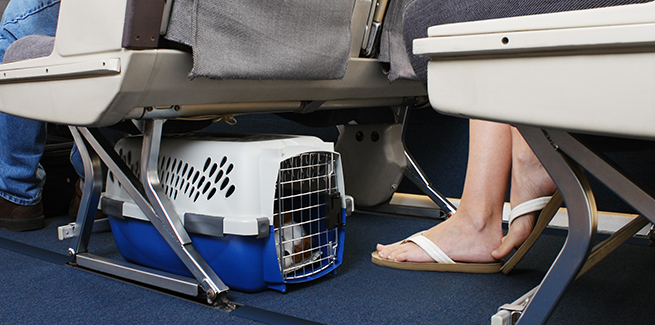Have (rabies) vax, will travel

As promised last summer, the US Centers for Disease Control (CDC) has revised travel restrictions meant to control the other global pandemic: rabies.
Earlier this year, in July, a flood of illegal imports and fake rabies vaccination certificates drove the CDC to temporarily suspend the importation of dogs from more than 100 countries identified as high-risk for importing canine rabies into the United States. (NEWStat reported it here.)
Beginning this week (December 1), dogs vaccinated in the United States by a US-licensed veterinarian may re-enter the US from a high-risk country without a CDC Dog Import Permit if the dog meets five criteria:
- Has a valid US-issued rabies vaccination certificate;
- Has proof of a microchip and the microchip number appears on the vaccination certificate;
- Is at least 6 months old;
- Is healthy upon arrival; and
- Arrives at an approved port of entry.
The precautions affect all dogs that have spent any amount of time, however brief, in any high-risk country during the previous six months. That includes dogs arriving directly from a high-risk country. But it also includes dogs who have spent time in a high-risk country but arrive in the US via a country not on the high-risk list.
For the rabies certificate to be valid, the rabies vaccine must have been administered by a US-licensed veterinarian in the United States on or after 12 weeks of age and at least 28 days before arrival in the US if it is the dog’s first vaccination. It takes 28 days for the rabies vaccine to fully immunize and protect the dog. Booster rabies vaccines administered in the United States after 15 months of age are valid immediately.
Expired US-issued rabies vaccination certificates are not accepted. If the certificate has expired, clients must apply for a CDC Dog Import Permit. The permit must be obtained before arriving in the United States; it will not be granted at the point of entry.
It’s important that travelers check their itineraries against the dog’s rabies vaccination schedule to be sure that the vaccination does not expire while they are traveling.
Approved points of entry include all 18 US airports with a CDC quarantine station:
- Anchorage (ANC)
- Atlanta (ATL)
- Boston (BOS)
- Chicago (ORD)
- Dallas (DFW)
- Detroit (DTW)
- Honolulu (HNL)
- Houston (IAH)
- Los Angeles (LAX)
- Miami (MIA)
- Minneapolis (MSP)
- New York (JFK)
- Newark (EWR)
- Philadelphia (PHL)
- San Francisco (SFO)
- San Juan (SJU)
- Seattle (SEA)
- Washington DC (IAD)
A rabies vaccination certificate issued in Canada is not sufficient. Nor is there any way to bring a high-risk dog across the land border between the two countries. High-risk dogs may only be brought into the United States through an approved port of entry, and all of the approved points of entry are airports.
Key takeaways:
- The precautions apply to dogs that have spent some time, however briefly, in a high-risk country within the last six months. How briefly? If the dog went through customs, it was in the country.
- The dog must be vaccinated and microchipped, and the microchip number must appear on the vaccination certificate.
- If the country is not listed here, the CDC strongly recommends a rabies vaccine certificate, but the certificate is not required to enter the United States. Some states or other jurisdictions, however, do require proof of vaccination. Advise any clients traveling with pets to check with the state and local jurisdiction to learn what is required. Texas, for example, requires all dogs and cats must be vaccinated against rabies by 12 weeks.
- Cats are home free. The CDC does not require rabies vaccination for cats entering the United States, but some states do require it. Refer clients to this page for more information.
Photo credit: © gchutka/E+ via Getty Images Plus



